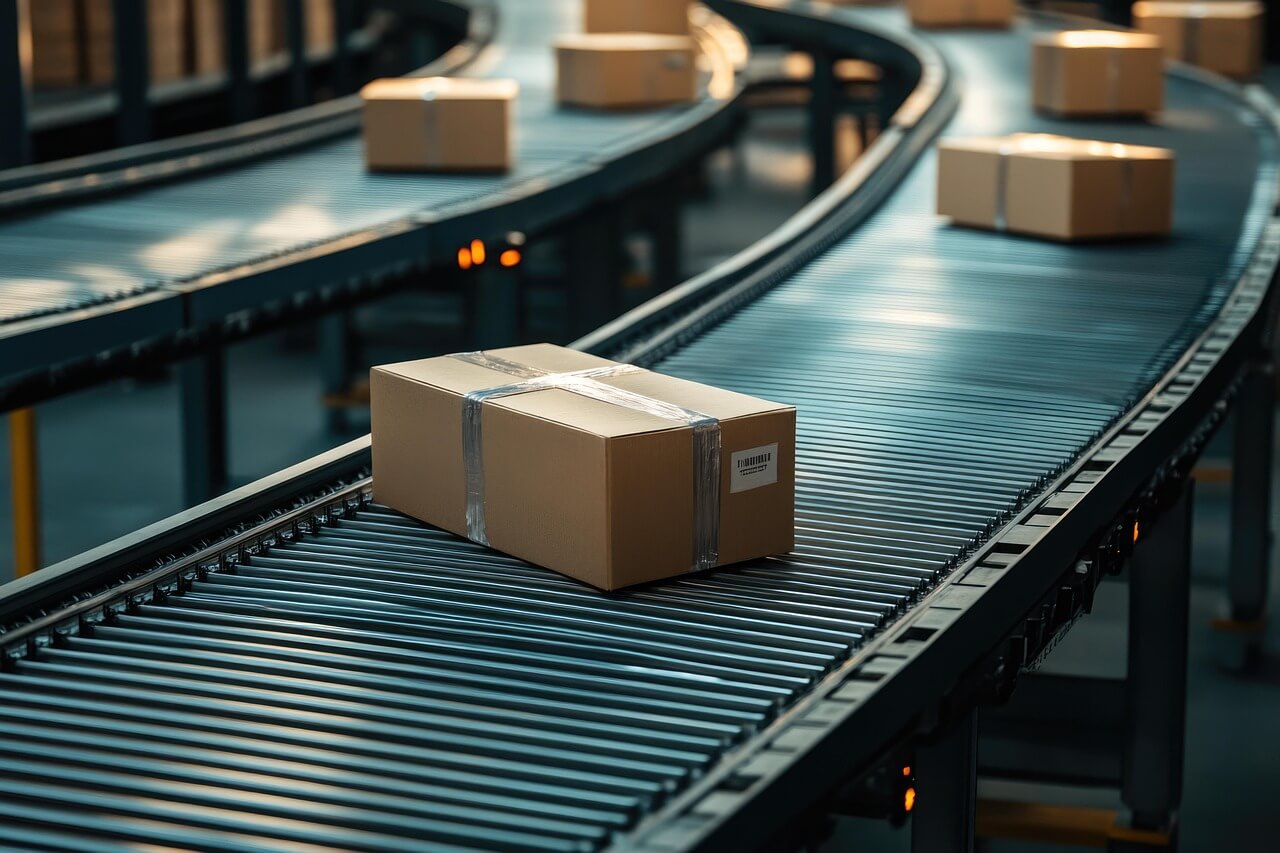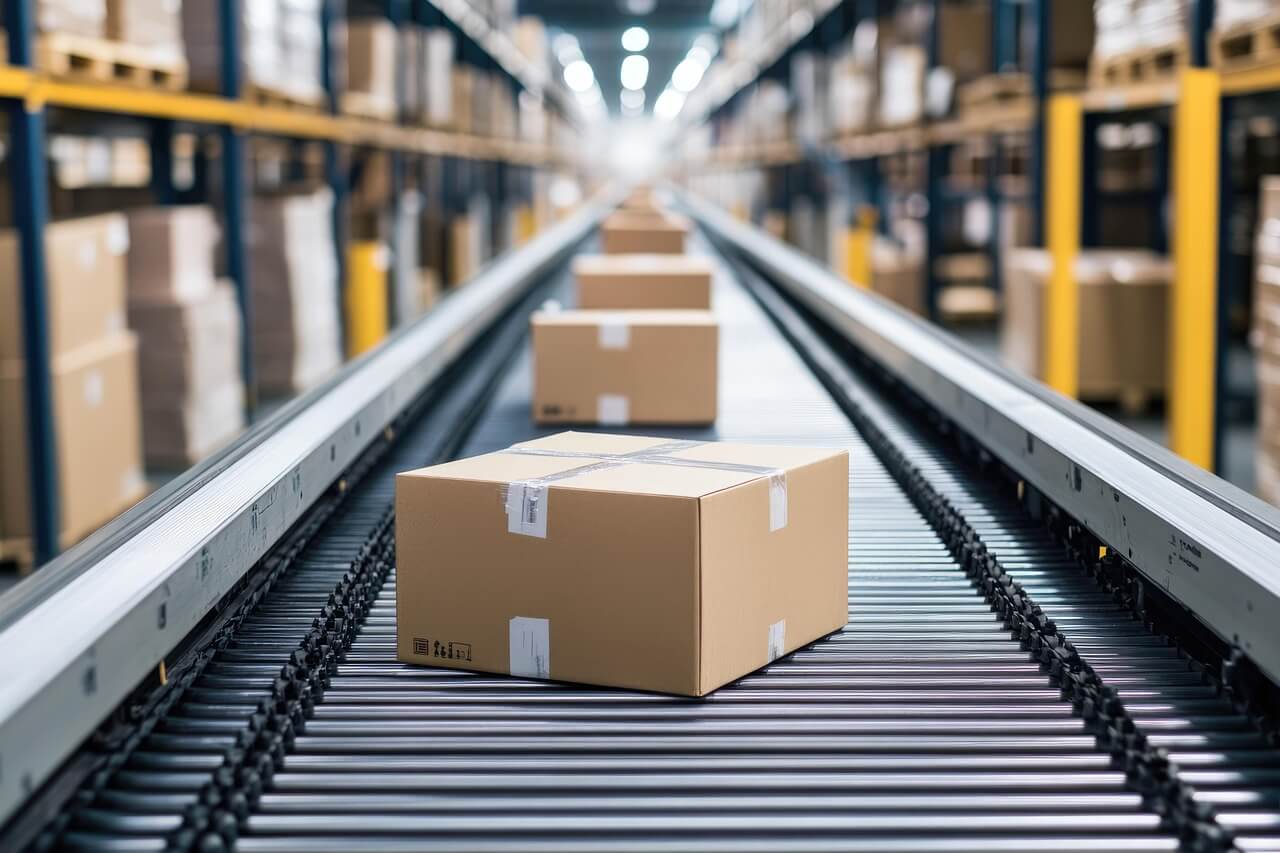
E-commerce stores are booming. But shipping them all on time becomes a real headache as orders pile up. Instead of finding new customers, you might feel buried in packing tape and labels. This strain causes delays and disappointed customers, who may go directly to your rivals.
A fulfillment center fills that need. It is a powerful partner that handles all your storage and shipping, freeing you up to grow your brand. This market is massive. A 2024 report from Grand View Research valued the global market at USD 123.68 billion. Plus, it will grow over 14% annually through 2030.
This guide will define what a fulfillment center is, the many types of precisely and demonstrate how to select the ideal partner.
What is a Fulfillment Center?
A fulfillment center is the engine that powers an e-commerce business. Think of it as a busy hub that handles every step needed to get a product from your store to a customer's front door.
It is more than just a storage place; it's a true service partner. A center's main job is to complete customer orders quickly and accurately. When an online store gets an order, it zips it to the fulfillment center. From that moment, the center's team takes over the entire process.
Fulfillment Center Meaning
This whole process, often called "order fulfillment," includes five main steps:
• Receiving: Taking and storing the products from an online seller.
• Storing: Organizing the products on shelves.
• Picking: Locating the appropriate things for a customer's order.
• Packing: Placing the goods in a box with packing supplies and a label.
• Shipping: Giving the completed package to a carrier (such as FedEx or UPS) so they can deliver it to the client.
These centers connect directly to the store's website using specialized software. This technology speeds up the process and helps avoid errors, guaranteeing that consumers receive exactly what they bought.
Fulfillment Center vs Distribution Center
Although they have quite distinct jobs, people frequently confuse these terms. Who they serve is the primary distinction.
• A distribution center (DC) focuses on B2B (Business-to-Business). Its job is to send products in bulk. For instance, it might ship a massive pallet containing 500 shirts to just one department shop.
• A fulfillment center (FC) focuses on B2C (Business-to-Consumer). Its job is to send small, individual orders. One shirt, for example, is shipped straight to a person's house in a tiny package.
Simply put, a fulfillment center delivers parcels to residences, whereas a distribution center delivers truckloads to retail locations.
Different Types of Fulfillment Centers
Now that you know what they are, let's examine the many types of fulfillment centers. You will discover that not every center is the same. Indeed, they are frequently designed to meet extremely specific requirements. The sort you select will determine your success.
Ecommerce Fulfillment Center
This is the most popular option for online retailers because their technology connects directly to platforms like Shopify. When an order arrives, it is automatically sent to the center, where their staff picks, packs, and ships everything. This powerful service enables small brands to offer the same quick, dependable shipping as large retailers.
3PL Fulfillment Center
3PL fulfillment centers, or "3PL" for short, hire an outside company to handle all your shipping; you pay the 3PL fees for storage and packing each order. This popular model is very flexible, saves money, and gives you access to advanced software for tracking every item.
Micro Fulfillment Center
A micro-fulfillment center (or MFC) is a new and exciting type. These are small, highly automated centers. They are frequently found in the back section of a grocery store or smack in the middle of bustling cities.
• Purpose: To be as close to the customer as possible.
• Benefit: This closeness allows for ultra-fast delivery. This includes 1-hour delivery, same-day delivery, or "BOPIS" (Buy Online, Pick Up In Store).
• Technology: MFCs often use robots to find and pick items in a very small space.
You'll often see these used for groceries, food, and convenience items where customers want their products immediately.
Other Common Terms
You will hear a few more terms, although they are frequently synonymous.
• Warehouse fulfillment center: This is more than storage. It's an active hub where items are always shipping out to customers.
• Product fulfillment center: This term just means the center handles physical items, like clothes or books, instead of digital downloads.
• Pick and pack fulfillment center: This refers to the center's primary function, "picking" goods from shelves and "packing" them into boxes.
• Order fulfillment center: This emphasizes the center's primary objective: to "fulfill" customer orders.
Many of these terms, such as "e-commerce," "3PL," "pick and pack," and "order", are frequently used to refer to the same thing, as you can see. Ultimately, they all point to an important partner: an online order shipping provider.

How to Choose a Fulfillment Center?
Choosing the right fulfillment center is a critical choice that might make or break your business. While a poor partner can cause shipping headaches, a great partner helps you develop by delivering orders smoothly. You'll have a lot of options as your business expands, so it's critical to understand what to look for in a successful partner.
The most crucial items to search for are as follows:
Fulfillment Center Pricing
Although it might be complicated, pricing typically consists of four components. Knowing what you're paying for will help you manage your spending and avoid unforeseen costs.
• Receiving: This is a one-time fee for taking in your products when they arrive from your factory.
• Storage: This is a monthly fee to keep your items on their shelves.
• Pick & Pack: This is what you pay each time they prepare an order to be shipped.
• Shipping: This is the actual postage cost from carriers like UPS or FedEx. Good centers get big discounts and pass the savings on to you.
However, a low price isn't everything. A cheap partner who makes mistakes will cost you more in the long run with unhappy customers.
Tracking Performance and Customer Feedback
You need to know if they're doing well by listening to your customers with smart tools like VOC Insight. Check your reviews and support tickets for complaints about shipping. Are packages late, damaged, or wrong? A good partner will want to see this feedback to fix their mistakes. Sharing this information helps them improve and holds them accountable.
Fulfillment Center for Small Businesses
Look for a partner who understands this. You'll want one with no order minimums so that you can grow at your own pace. Also, find a center with simple, flat-rate pricing to help you predict your costs easily. Most importantly, seek out great support. When something goes wrong, you need a qualified customer service agent who is familiar with your company and can quickly resolve issues. Your e-commerce business's success depends on this personal touch.
Amazon Fulfillment Center
It is impossible to discuss fulfillment without bringing up the largest company in the world: Amazon. Their global success is largely due to their extensive logistical network, which begins at their warehouses.
What is an Amazon Fulfillment Center?
An Amazon fulfillment center is a massive warehouse that the company owns and runs. It is the foundation of the Fulfillment by Amazon (FBA) initiative.
With the FBA program, sellers send their products in bulk to an Amazon warehouse. Amazon stores everything for you. Your product is selected from the shelf, packaged in a box, and shipped by Amazon employees when a consumer purchases it. They also handle customer service and returns. The best part is that your items automatically get Prime shipping.
Monitoring your feedback is still vital. Even though Amazon handles shipping, your brand's reputation is on you. Tools like VOC Insight can automatically scan your reviews and customer questions to find patterns. Use it to catch shipping problems, like "crushed boxes." You can use this data to defend your seller rating by fixing your packaging or informing Amazon.
What does an Amazon Fulfillment Center do?
An Amazon fulfillment center carries out all of the functions of a typical 3PL center, but on a massive scale. They are renowned for accelerating everything with robotics and technology.
• Receives Seller Inventory: They check in millions of items from thousands of sellers worldwide.
• Stores' Inventory: They use a system called "chaotic storage." This simply means a book might be stored right next to a bottle of vitamins. This system seems random, but it is very efficient for robots.
• Picks and Packs: When ordering, a robot frequently delivers the entire shelf to a human employee. The employee selects the item and places it on a conveyor belt before sending it to be packaged in a box bearing the Amazon logo.
• Ships: The shipment is shipped by UPS or Amazon's delivery network.
This high level of automation is a major trend. A significant 2024 MHI Annual Industry Report shows that 57% of supply chain executives intend to boost robotics spending. Amazon is a pioneer in this field, utilizing technology to accelerate every stage.
Is Amazon a Distribution or Fulfillment Center?
Amazon's network has both, but its most famous buildings are fulfillment centers. Their primary responsibility is B2C fulfillment, which involves delivering small products directly to customers' homes.
However, Amazon also operates "inbound cross-docks" and "sortation centers." These act more like traditional distribution centers. They receive products in bulk and then distribute them to fulfillment centers nationwide.
So, for an Amazon seller using FBA, you send your products to a fulfillment center. Its main job is to "fulfill" your customer orders individually. In short, Amazon uses a smart combination of both types of centers to run its massive operation.
Conclusion
Understanding what a fulfillment center is can unlock new growth for your business. They are partners who manage the most challenging aspect of e-commerce logistics for you; they are more than just warehouses.
You no longer need to store boxes in your garage because every business has a great partner, regardless of its size. Stop letting shipping slow you down. It's time to locate a partner to help you grow, save shipping costs, and provide your clients with a "wow" experience.
Go ahead and do it! Get a free quote from a fulfillment specialist right now to see how much time and money you can save.
FAQs
Q1: What is a fulfillment center?
For online retailers, a fulfillment center is a service that manages all deliveries. They store your products, then pick, pack, and ship orders straight to your customers. Grand View Research shows the worldwide market is worth over USD 100 billion.
Q2: What is a package from a fulfillment center?
A package from a fulfillment center is sent by a third-party company (3PL) for the brand you bought from. Many Shopify stores use them. This is common practice. According to Armstrong & Associates' analysis, these partners are essential to 90% of domestic Fortune 500 companies.
Q3: What is the difference between an Amazon warehouse and a fulfillment center?
A fulfillment center is a particular kind of warehouse, just like an Amazon warehouse. Its job is to pack and ship individual FBA orders. Bulk items may only be stored or sorted by other Amazon warehouses. Globally, Amazon has more than 1,100 fulfillment facilities.
Q4: What does a fulfillment company do?
A fulfillment business (3PL) handles your whole inventory and shipment. They handle receiving, storage, order processing, and returns. This frees owners to focus on sales. The annual 3PL Study reports users see big benefits, like an 11% average drop in logistics costs.



